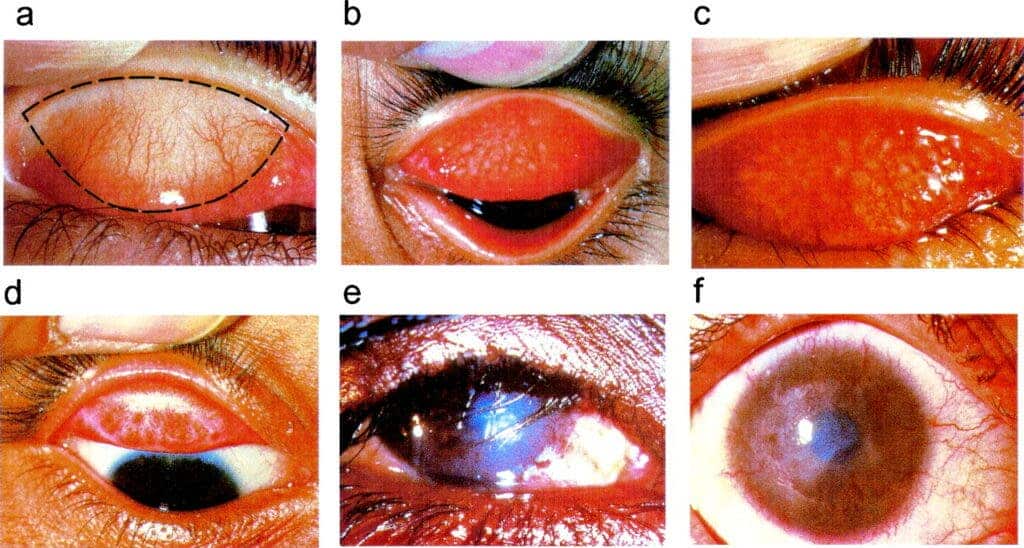Trachoma is caused by the bacterium called Chlamydia trachomatis. In its early stages, trachoma causes conjunctivitis (pink eye) with symptoms appearing within five to 12 days of exposure to the pathogen. As the infection progresses, it causes eye pain and blurred vision.

If left untreated, scarring occurs inside the eyelid leading to the eyelashes turning inward toward the eye (a condition called trichiasis). As the eyelashes scratch against the cornea, it becomes irritated and eventually turns cloudy and can lead to corneal ulcers and vision loss. Generally, it takes years before trachoma can cause vision loss. In the early stages of the disease, antibiotics are very effective but more advanced cases may need surgery to help limit further scarring of the cornea and prevent further loss of vision. A corneal transplant can help if the cornea is so clouded that vision is significantly impaired.
Trachoma is the leading infectious cause of blindness globally and has long been considered a major public health problem in the Southeast Asian nation, with the first Trachoma Control Project initiated in 1964 by the Ministry of Health and Sports, with support from WHO and the United Nations Children’s Fund (UNICEF).
In 2005, trachoma was responsible for 4% of all cases of blindness in Myanmar. From 2010 to 2015, the annual period prevalence of blindness from all causes in the total population was very low in all regions and states, ranging from 0% to 0.023%. By 2018, this prevalence dropped to 0.008%. The WHO Weekly Epidemiological Record in July also reported the number of people at risk of trachoma has been reduced by 91% — from 1.5 billion in 2002, to 136.9 million in May 2020.

In order to eliminate trachoma as a public health problem, there is a WHO-recommended “S.A.F.E.” strategy which includes: Surgery for trichiasis, Antibiotics to clear Chlamydia trachomatis infection, Facial cleanliness, and Environmental improvement to reduce transmission. Community-based interventions also include improved access to water, sanitation and hygiene (WASH), and health education promoting behavior change to decrease transmission.
“This remarkable achievement reminds us of the importance of strong political commitment to implement integrated disease elimination measures, public engagement and disease surveillance,” said Dr. Mwelecele Ntuli Malecela, WHO Director, Department of Control of Neglected Tropical Diseases. “The new neglected tropical disease road map for 2021–2030, which will foster these processes globally, should allow us to anticipate more such success stories from countries using WHO-recommended strategies.”
Myanmar is the tenth country worldwide following Cambodia, China, Ghana, the Islamic Republic of Iran, Lao People’s Democratic Republic, Mexico, Morocco, Nepal, and Oman to reach this milestone. It remains a public health problem in 44 countries and is responsible for the blindness or visual impairment of an estimated 1.9 million people, most of whom are extremely poor. Regular post-validation trachoma surveys are also planned to provide post-validation surveillance. Successful validation of elimination of trachoma as a public health problem in Myanmar will encourage other health ministries and their partners to continue their efforts against this painful blinding disease.









